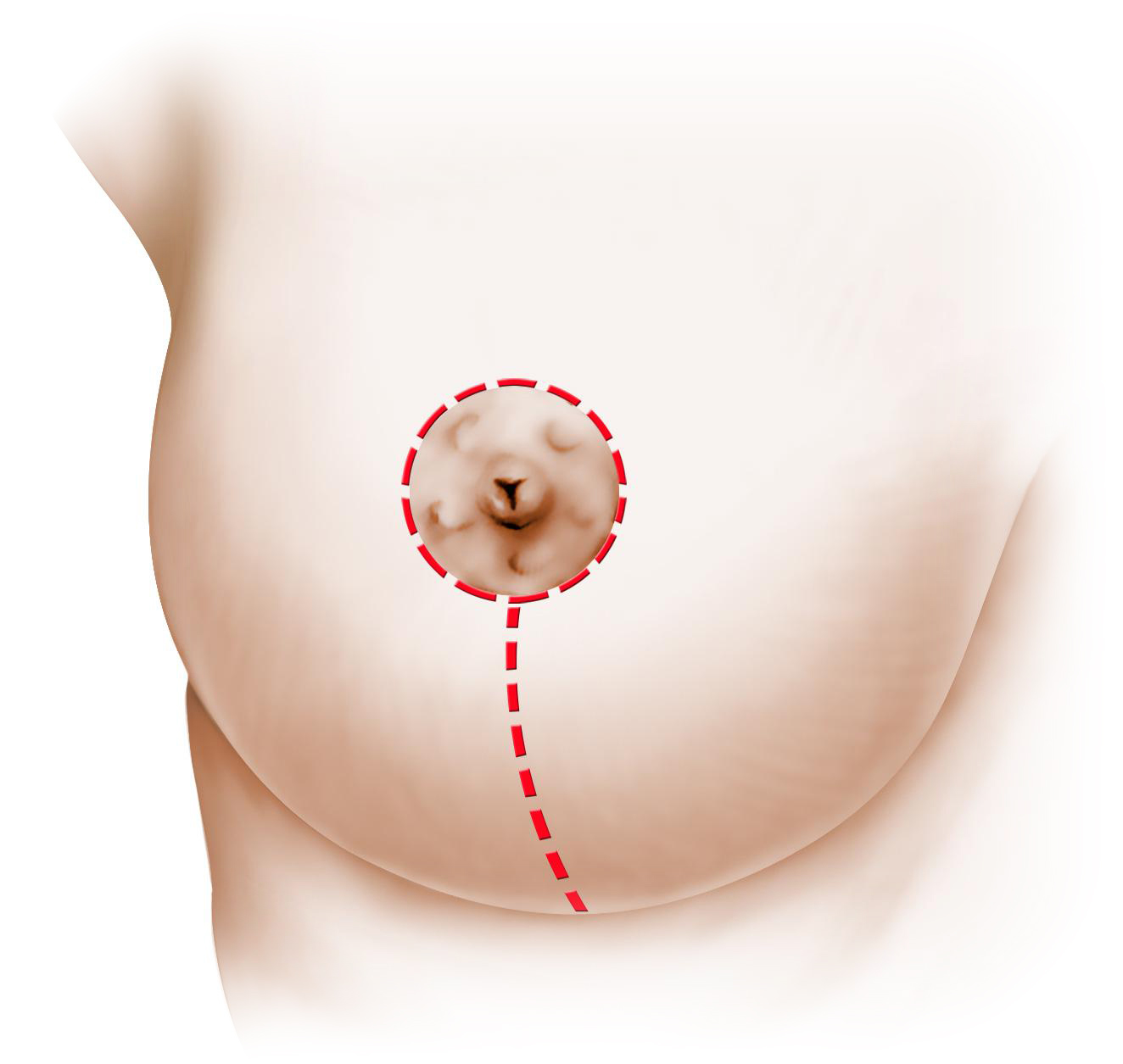

A breast reduction procedure, also called a reduction mammaplasty, is one of the more commonly performed procedures in plastic surgery because of its ability to quickly and dramatically improves the symptoms associated with large breasts (macromastia) and improve your appearance. Pregnancy, breast-feeding, weight fluctuations, and genetics all have a significant impact on the volume and symmetry of the breast. Large breasts can cause some women to have both health and emotional problems. In addition to self image issues, you may also experience physical pain and discomfort in your neck, shoulder and upper back. The weight of excessively large breasts can reduce your ability to lead the active lifestyle that you desire. In addition, emotional discomfort and self-consciousness often associated with having large breasts can be as troubling the physical discomfort.
During your consultation, your medical history, drug allergies, current medications, and smoking history will be reviewed and a detailed breast history will be obtained. For most patients, it is advisable to have a mammogram prior to surgery. Dr. Saar or Dr. O’Halloran will inquire about the medical management of your symptoms related to your large breasts and discuss your expectations from surgery and your desired outcomes. Anytime a woman considers undergoing breast reduction surgery, it’s natural to feel some anxiety, so don’t be shy about discussing these feelings during your consultation. Dr. Saar or Dr. O’Halloran will examine your breasts, including detailed breast measurements, skin quality, and nipple position. Based on these finding, your options for breast reduction will be discussed. The various reduction mammaplasty procedures will be reviewed in detail including the surgical technique, likely outcomes, and any risks or potential complications associated with your surgery.
Breast reduction surgery is performed on an outpatient basis, usually in an ambulatory surgery center, using general anesthesia. With general anesthesia you are completely asleep and do not feel any pain. In a breast reduction procedure, excess breast tissue, fat, and skin are removed to achieve a breast size that is in proportion with your body and to alleviate the discomfort associated with the large breasts. The position of the breast on the chest wall is elevated and the size of the areola (the pigmented area around your nipple), is usually reduced to match the smaller size breast. Your breast reduction procedure can be achieved through a variety of incision patterns and techniques. The appropriate technique for you will be determined based on your breast size and shape, the size and position of the areola the degree of breast sagging (ptosis), the amount of excess breast tissue, and the quality and elasticity of your skin. Some incision lines resulting from breast reductions are concealed in the natural breast contours; however, others are visible on the breast surface. Incision lines are permanent, but in most cases will fade and significantly improve over time. Many women desire the smallest breast possible; however, Dr. Saar or Dr. O’Halloran will recommend the breast size which can safely be obtained and will best suit your body frame. Drains are normally used and are removed within 48 hours. The sutures are absorbable and the postoperative dressing can be removed in 24 hours. Typically, patients are able to return to work with in a few days after a breast reduction procedure, breast soreness usually resides after 1-2 weeks, and you may resume exercise in approximately 4 weeks. The results of your reduction mammaplasty surgery are immediately visible. Over time, post-surgical swelling will resolve and incision lines will fade. Satisfaction with your new image should continue to grow as you recover.
Vertical - A keyhole or racquet-shaped pattern with an incision around the areola and vertically down to the breast crease

Modified Wise - An inverted T or anchor-shaped incision pattern (most common)

A mastopexy procedure does not provide exaggerated fullness or roundness in the upper breast and it does not enlarge the breast size. If you want larger breast or fullness in the upper part of the breast, you may also consider a breast enlargement (breast augmentation). Breast augmentation can usually be done at the same time as your mastopexy or in some cases a separate operation may be recommended. Dr. Saar or Dr. O’Halloran will assist you in making this decision.
Breast reduction surgery is generally considered a reconstructive breast procedure and may be covered by your health insurance when it is performed to relieve the medical symptoms associated with overly large breasts. Insurance providers usually determine whether to categorize breast reduction surgery as reconstructive surgery based on the estimated amount of tissue that is planned to be removed, as well as, documented failure to achieve relief of symptoms with medical management. A pre-determination of benefits is usually required for insurance reimbursement or coverage. Insurance policies vary greatly, so carefully review your insurance policy to determine availability of coverage. Breast reduction surgery can also be performed as an elective cosmetic procedure.